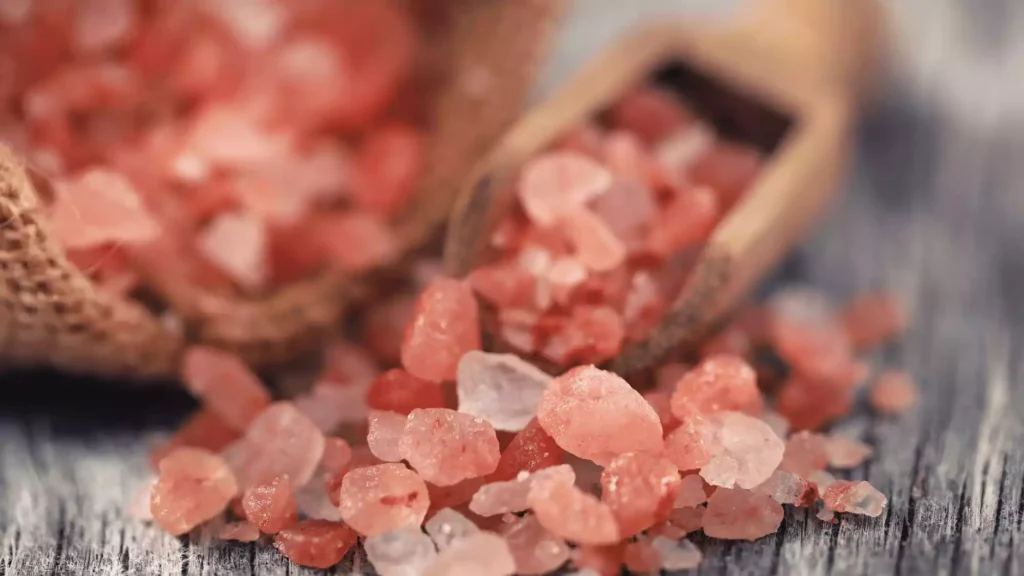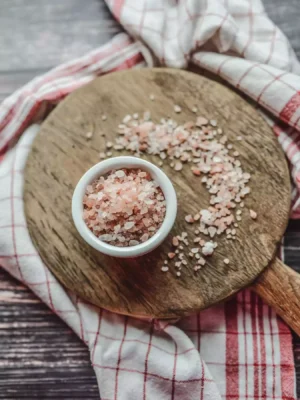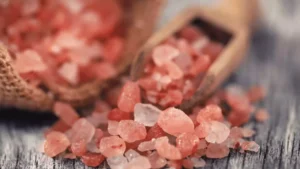Salt has been an essential part of human history for thousands of years. From preserving food to enhancing flavors, it is a mineral that plays a role in every kitchen and every culture. But while most people are familiar with plain white table salt, there’s another variety that has gained global popularity: Himalayan Pink Salt. Recognized for its rosy hue and reputation as one of the purest salts on Earth, this natural product has become a favorite in kitchens, spas, and even the wellness industry. Yet many people still ask the same questions: What exactly is Himalayan Pink Salt? Is it really better than table salt? And why does it matter which one we use? In this guide, we’ll explore the origins, benefits, and differences between pink salt and table salt so you can make an informed choice.
What is Himalayan Pink Salt and where does it come from?
Himalayan Pink Salt is a natural rock salt that is mined from the Khewra Salt Mine in the Punjab region of Pakistan, which is considered one of the largest and oldest salt mines in the world. This salt was formed millions of years ago when ancient seas evaporated, leaving behind layers of mineral-rich crystals that were later sealed under pressure by rocks and mountains. Unlike heavily refined table salt, Himalayan Pink Salt is typically hand-extracted and minimally processed, which means it retains its natural structure and trace minerals. The pinkish color that makes it stand out comes from small amounts of iron oxide, though other minerals like magnesium, calcium, and potassium also contribute to its unique composition. For this reason, it is often marketed as a more natural, pure, and mineral-rich alternative to ordinary salt. Its history, geological origins, and visual appeal all make it an ingredient that feels both exotic and authentic.
How is Himalayan Pink Salt different from table salt in composition?
The key difference lies in processing and mineral content. Table salt is usually heavily refined, stripped of most minerals, and bleached to achieve its bright white appearance. In addition, table salt almost always contains additives such as anti-caking agents to keep it from clumping, and sometimes synthetic iodine to prevent iodine deficiency. While these processes make table salt uniform and easy to use, they also remove natural minerals and alter its original structure. Himalayan Pink Salt, on the other hand, undergoes far less processing. It contains more than 80 trace minerals, including iron, magnesium, and potassium, which are absent in refined salt. Though these minerals are present in tiny amounts, they are what give pink salt its signature color and subtle differences in flavor. Many people believe that this composition makes it more wholesome and natural compared to table salt. Scientifically, both are still mostly sodium chloride, but the presence of natural minerals sets them apart.
Does Himalayan Pink Salt taste different from table salt?
While both types of salt are primarily sodium chloride, their taste profiles can be surprisingly different. Table salt has a very sharp, almost metallic saltiness that dissolves quickly on the tongue, which is ideal for consistent seasoning in mass-produced food. Himalayan Pink Salt, however, offers a softer, more rounded flavor that chefs and home cooks often describe as less harsh and more earthy. Because it dissolves more gradually, it enhances flavors in a subtler way, making dishes taste balanced rather than aggressively salty. Some culinary experts also say that the trace minerals in pink salt contribute to its complexity, though this is more noticeable when used as a finishing salt rather than when cooked into dishes. For this reason, you’ll often see chefs sprinkle pink salt over grilled vegetables, steaks, or even desserts as a final touch. The flavor difference may not be extreme, but for those who value depth and nuance in their cooking, pink salt is a preferred choice.
Are there health benefits to using Himalayan Pink Salt?
This is one of the most frequently asked questions, especially by health-conscious consumers. Pink salt is often marketed as being healthier than table salt because of its mineral content and natural purity. While it’s true that Himalayan Pink Salt contains small amounts of beneficial minerals like magnesium, potassium, and calcium, the quantities are generally too low to significantly impact overall nutrition. However, one real advantage is that it doesn’t contain artificial additives such as anti-caking agents or bleaches that are commonly found in table salt. Some wellness communities also believe that pink salt can help balance hydration, improve digestion, or support pH balance in the body, though scientific evidence is limited. What is certain is that moderation matters—too much sodium, whether from table salt or pink salt, can lead to health risks like high blood pressure. So, while pink salt may be a cleaner, more natural option, it should still be used in balanced amounts.
Why do chefs and home cooks prefer Himalayan Pink Salt?
In the culinary world, salt is more than just seasoning—it’s an essential ingredient that can transform a dish. Chefs prefer Himalayan Pink Salt not only for its taste but also for its texture and presentation. Available in various grain sizes, from fine to coarse, it gives chefs flexibility in how they use it. Coarse grains are perfect for creating a crunchy finishing touch on dishes like salads, roasted meats, and breads, while fine grains blend seamlessly into soups, sauces, and marinades. The striking pink color also adds visual appeal, making even simple dishes look more elegant and gourmet. Beyond the kitchen, pink salt blocks are used for grilling and serving, giving food a unique flavor and stunning presentation. For many professionals, the versatility and aesthetic of pink salt make it worth the higher price, and for home cooks, it adds an element of sophistication to everyday meals.
What about iodine—does Himalayan Pink Salt contain it naturally?
One practical reason table salt became iodized was to prevent iodine deficiency, which was once a major health issue in many parts of the world. Table salt often has synthetic iodine added for this purpose. Himalayan Pink Salt, by contrast, contains only trace amounts of naturally occurring iodine, which is not enough to meet daily requirements. For people who rely solely on pink salt in their diet, this could pose a concern if they don’t get iodine from other food sources such as seafood, dairy, or seaweed. That said, in today’s diverse diets, many people consume sufficient iodine through other means. If you choose pink salt as your primary salt, it’s important to ensure you’re not missing out on this essential nutrient. For most individuals, the key is to use pink salt for its natural appeal while maintaining a balanced diet that includes other sources of iodine.
Can Himalayan Pink Salt be used outside the kitchen?
Yes—and this is part of what makes it so popular worldwide. Beyond cooking, Himalayan Pink Salt is widely used in the wellness and beauty industries. Its coarse crystals are often added to bath salts, scrubs, and spa treatments because of their supposed detoxifying and soothing properties. Many people believe that soaking in pink salt baths can help relax muscles, ease tension, and refresh the skin. Additionally, Himalayan Salt Lamps—carved from large pink salt crystals—are marketed as natural air purifiers and mood enhancers, though scientific evidence is limited. Even in agriculture, animal lick salt blocks made from pink salt are given to livestock for trace minerals. These diverse applications make pink salt much more than a culinary ingredient; it’s also a lifestyle and wellness product. Its versatility helps explain why it has become a global trend far beyond the kitchen.
Conclusion
Himalayan Pink Salt has captured global attention because it combines history, beauty, and functionality. From its origins in the ancient salt mines of Pakistan to its role in modern kitchens and wellness routines, it has become a symbol of purity and natural living. While it shares similarities with table salt, its minimal processing, mineral content, and unique flavor give it an edge for those who value authenticity and quality. That said, it is not a miracle food—it is still primarily sodium chloride and should be consumed in moderation. Whether you’re a chef looking to elevate flavors, a health-conscious consumer seeking cleaner ingredients, or someone who simply appreciates natural products, Himalayan Pink Salt offers a simple yet powerful upgrade. By understanding its differences from table salt, you can make a more informed choice that fits your culinary and lifestyle preferences.



